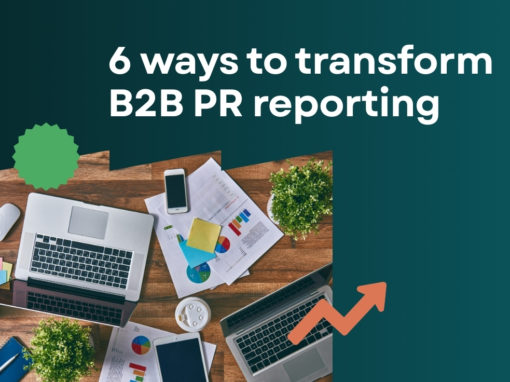As we onboard new customers or provide training to existing ones, we’re lucky enough to cast our eyes over a vast array of PR reports and have conversations with those who are responsible for creating them.
And since Releasd allows PR professionals to report back on any aspect of their work in exactly the way they choose, we’re in the unique position to see, in real time, how their priorities are evolving as a whole.
Here are five PR reporting trends that we’re seeing so far in 2021, and expect to continue well into 2022:
1. Less earned media coverage
As one PR freelancer put it, “There just aren’t as many journalists any more, so it’s harder to get coverage than it used to be.”
To mitigate this, we’re seeing competitor coverage being included in reports where previously there was none. Another client, this time representing a small agency, said that they now rely on ‘partnerships’ with niche publications to generate awareness. In other words, they pay an outlet to give them space to write about a client in their own words.
And sometimes there is no media coverage at all. Which brings us to our next point.
2. Greater focus on supporting activity
There is now far more confidence to report back on, and demonstrate the value of, work being done ‘behind the scenes’.
This often includes the establishment of relationships with important influencers, progress being made with content development, the organisation of virtual events, award entries and pending product reviews.
The fact that modern Communications teams and their stakeholders have evolved to the point of seeing value beyond media coverage is a great step forward for the industry as a whole.
3. The rise of Stories
It’s now rare for a report (at least for a consumer brand) not to feature at least one Instagram story.
It’s now clear that their uniquely visual, narrative format lends itself well to branded promotion. However, Stories can be potentially challenging to report back on due to their temporary nature and the fact they are not easily-captured. There are also evolving legal considerations to bear in mind.
From what we have seen however, Stories have become a mainstay of modern PR reporting and we expect their presence to grow over the coming months.
4. More sophisticated evaluation
When we first started Releasd back in 2014, clients would often choose to present a handful of basic metics; often including AVE and the number of pieces of coverage achieved.
Now, we’re seeing reports bursting with far more sophisticated data points (like article-level views and social reactions) but also qualitative commentary around how the work has helped the client or brand achieve its overall objectives.
The wonderful thing is that we’ve seen this trend pretty much across the board – not only from large, global agencies with the resources one would expect, but also from freelancers who carry the load all by themselves. This, together with the slow death of AVE, is another hugely encouraging thing to see.
5. More reporting
Keeping stakeholders in the loop in terms of what is being done and why it’s of value has always been a challenge for the PR industry.
Remote working has made it even harder.
Our conversations, especially with new customers, have confirmed that reporting in a visually impactful and professional way is now a business priority. We’ve also seen an increase in the frequency of reports across a wide range of existing clients.
If remote working is here to stay, expect this increased reliance on reporting excellence to stick around too.
These are our five foremost PR reporting trends that we’ve seen in 2021 so far, and believe will continue into 2022.
If you’re ready to create your own ‘next generation’ coverage reports, please visit us at Releasd.com to book a demo or take up a free trial.



